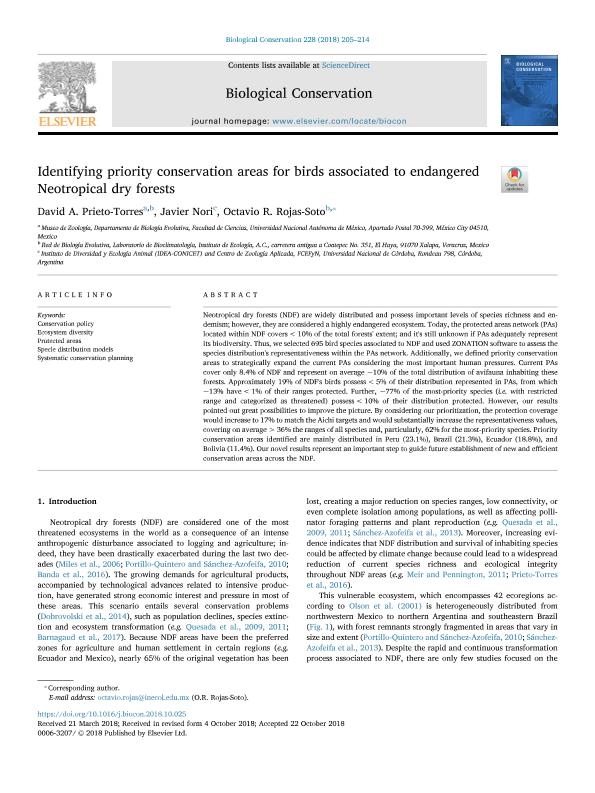Artículo
Identifying priority conservation areas for birds associated to endangered Neotropical dry forests
Fecha de publicación:
12/2018
Editorial:
Elsevier
Revista:
Biological Conservation
ISSN:
0006-3207
Idioma:
Inglés
Tipo de recurso:
Artículo publicado
Clasificación temática:
Resumen
Neotropical dry forests (NDF) are widely distributed and possess important levels of species richness and endemism; however, they are considered a highly endangered ecosystem. Today, the protected areas network (PAs) located within NDF covers <10% of the total forests' extent; and it's still unknown if PAs adequately represent its biodiversity. Thus, we selected 695 bird species associated to NDF and used ZONATION software to assess the species distribution's representativeness within the PAs network. Additionally, we defined priority conservation areas to strategically expand the current PAs considering the most important human pressures. Current PAs cover only 8.4% of NDF and represent on average ~10% of the total distribution of avifauna inhabiting these forests. Approximately 19% of NDF's birds possess <5% of their distribution represented in PAs, from which ~13% have <1% of their ranges protected. Further, ~77% of the most-priority species (i.e. with restricted range and categorized as threatened) possess <10% of their distribution protected. However, our results pointed out great possibilities to improve the picture. By considering our prioritization, the protection coverage would increase to 17% to match the Aichi targets and would substantially increase the representativeness values, covering on average >36% the ranges of all species and, particularly, 62% for the most-priority species. Priority conservation areas identified are mainly distributed in Peru (23.1%), Brazil (21.3%), Ecuador (18.8%), and Bolivia (11.4%). Our novel results represent an important step to guide future establishment of new and efficient conservation areas across the NDF.
Archivos asociados
Licencia
Identificadores
Colecciones
Articulos(IDEA)
Articulos de INSTITUTO DE DIVERSIDAD Y ECOLOGIA ANIMAL
Articulos de INSTITUTO DE DIVERSIDAD Y ECOLOGIA ANIMAL
Citación
Prieto Torres, David Alexander; Nori, Javier; Rojas Soto Octavio R; Identifying priority conservation areas for birds associated to endangered Neotropical dry forests; Elsevier; Biological Conservation; 228; 12-2018; 205-214
Compartir
Altmétricas




